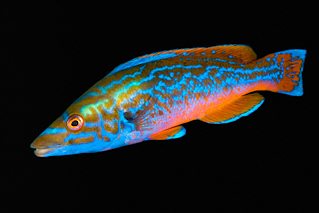BILDVISNINGAR
Anders is a frequently hired picture viewer and speaker
Nedan presenteras några olika förslag på bildvisningar kring olika teman. Samtliga visningar pågår normalt i ungefär en timme, men tiden kan justeras efter era önskemål. Priset för en bildvisning på cirka en timma är 3 000 kr. Självklart kan vi även skräddarsy föredrag, temadagar och kurser åt er. Är ni en sportdykarklubb som önskar ett sådant arrangemang kan ofta hela eller stora delar av kostnaden fås från idrottsrörelsernas studieförbund, SISU. Om ert önskade arrangemang tar hela arbetsdagar i anspråk debiteras 4 500 kr per arbetsdag. Till alla ovan nämnda priser kommer 25% moms samt reseersättning.
All year at Släggö

”All year at Släggö”describes the wildlife at the
popular divingspot Släggö in Lysekil
Släggö in Lysekil is probably Sweden's most dived place. A major contributing factor to this is that Släggö has a very rich and varied wildlife. More than 100 fish species have been noted there and it is one of the best places in Sweden to dive with octopus. At Släggö you can experience the wildlife in the Mediterranean, by the Arctic and at our own latitudes at one and the same dive site. Sure, it sounds weird, but it's actually quite possible, if not likely, if you dive there regularly throughout the year.
The lake's different fish
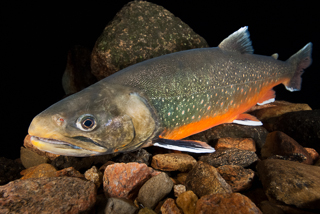
”The lake's different fish" is about Swedens
freshwater fishr
In our country there are over fifty different freshwater fish. Many of them are presented in more detail in this slide show. Some of them are really big; Europe's largest freshwater fish moth can grow over three meters long. Others are small and do not grow much more than a decimeter long, for example with Santa's eyes and green. Some have amazing colors, like the playful char. Others have fascinating adaptations, such as the pane, which can live without oxygen for several months.
The love life of fish
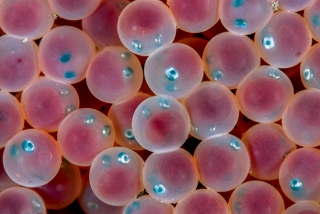
”The love life of fish”Is about the choice of partner and playing games
the reproduction of West Coast fish
In the middle of the icy winter, the red squirrel lays its beautiful, red-pink eggs by a rock wall at shallow depths. The female lays the rum and then leaves all the responsibility to the male who takes care of the offspring alone. The red-backed gull lays its eggs more or less directly on the rock wall, but in Sweden there are also many small fish that build nests like birds. A well-built nest is often a good way for the male to impress the female, but there are also other methods that fish males use to impress the opposite sex. Beautiful colors, a large muscular body and intense dancing are appreciated by other females. The male is not as critical and careful in the choice of partner as the female; the more females he comes across the happier he is.
Among sharks, rays and sea mice
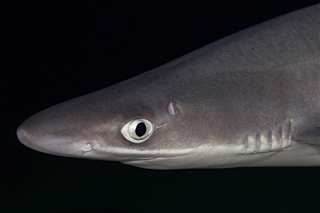
"Among sharks, rays and sea mice" is an interesting
slideshow about Swedens many sharks and rays
In Sweden, no less than 15 shark species have been noted and also a dozen different rays. Most of them are presented in more detail in this slide show. By far the most common Swedish shark is the porbeagle shark. In the past, this was found in huge shoals along the west coast, but the stocks have decreased drastically as a result of overly intensive fishing. Small-spotted red shark is the second most common shark in Swedish waters. It is a small species that does not grow more than a meter. Unlike the porbeagle, red sharks lay eggs that develop inside capsules outside the mother's body.
In pond, stream and river
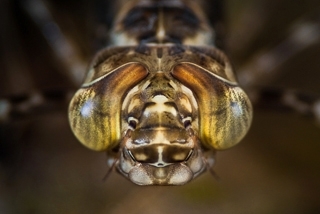
"In pond, stream and river" depicts the wildlife in our smaller
fresh waters
This slide show depicts the wildlife in our smaller Swedish freshwater environments. Our amphibians thrive in small fish-free ponds, but there are often plenty of large insects and their larvae here as well. At the water's surface, swimmers who stretch their long legs often lurk. They are predators and feed on other small insects. The prey is killed by injecting with a stick a splitting saliva which gradually dissolves the interior of the catch. The sting is actually painful even for us humans. In ponds and smaller lakes also often large beetles called divers. The divers' larvae live on the bottom and are very predatory. With their powerful jaws, they can catch large insects as well as tadpoles and small fish.
Changes in Sweden's marine fish stocks
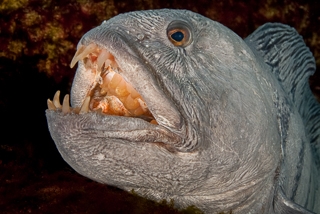
"Changes in Sweden's marine fish stocks"
is about how we humans affect our fish
In recent decades, there have been major changes in the fish populations in the sea. Some fish that used to be common are now disappearing from the coast of Sweden, such as catfish, cod, eel, halibut and gillnets. As the stocks of some fish species have declined, others have become more common. Sankt Per's fish, finknot, sea bass and thick-lipped mullet used to be rare guests in our waters, but today they are much more common. During this lecture you will see pictures of about 40 different fish from the Swedish coast, both common and unusual species. You will also learn a lot about the threats to our marine fish.
The special wildlife of the Baltic Sea
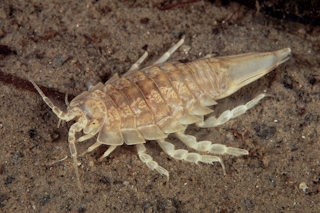
"The fascinating wildlife of the Baltic Sea" depicts it
fascinating wildlife on Sweden's east coast
The Baltic Sea is a unique sea in many ways. It is a very young sea where very few species of its own have developed. Instead, marine species live there that actually prefer a slightly saltier water and freshwater species that usually do not want any salt in the water. However, there are a number of organisms that thrive in the Baltic Sea; the so-called Arctic Ocean relics. Organisms that originate from the coastal waters of the Arctic Ocean, but which have today been trapped in the Baltic Sea. The large gray sucker-like scab is such an Arctic relic.
The wonderful world of the coral reef
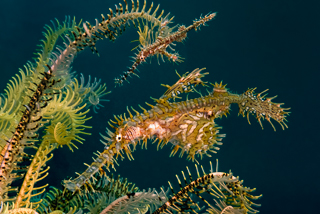
"The wonderful world of the coral reef" is about
the colorful and wildlife at tropical coral reefs
Tropical coral reefs are an environment that many dream of experiencing. Here is an incredible amount of fascinating and colorful animals. In this lecture, get to know more about several of them. To begin with, we take a closer look at the very base of the reef; the corals. Reef-forming corals are strange creatures. They are animals, but they are completely dependent on sunlight to grow. We also get to meet a whole lot of other animals that live on the reef. Many of them live together in so-called symbiosis. This is the case, for example, with the anemones and their anemone fish. There are also countless examples of shrimp that live with anemones as well as sea cucumbers or poisonous sea urchins. Gender-changing fish are another common occurrence on the coral reef.
